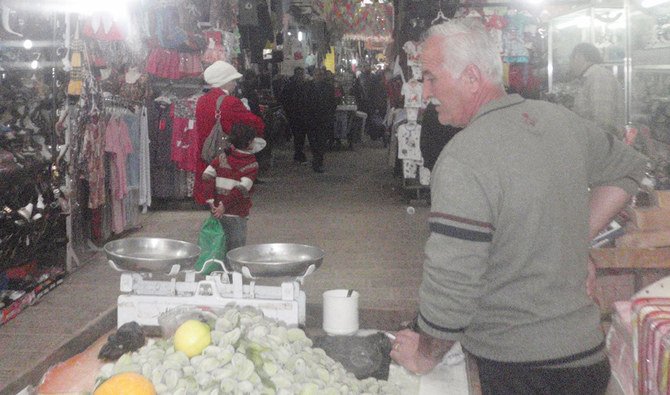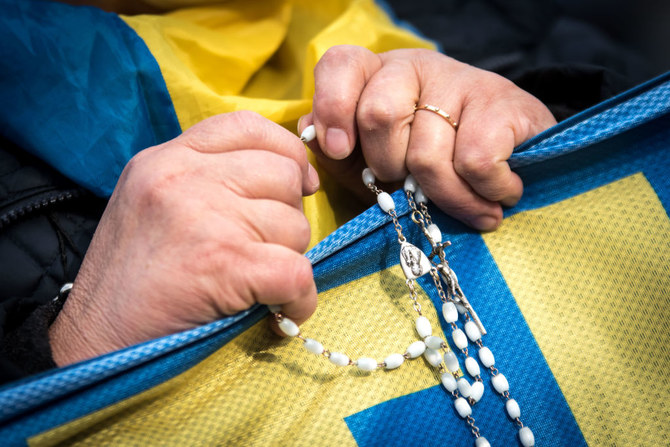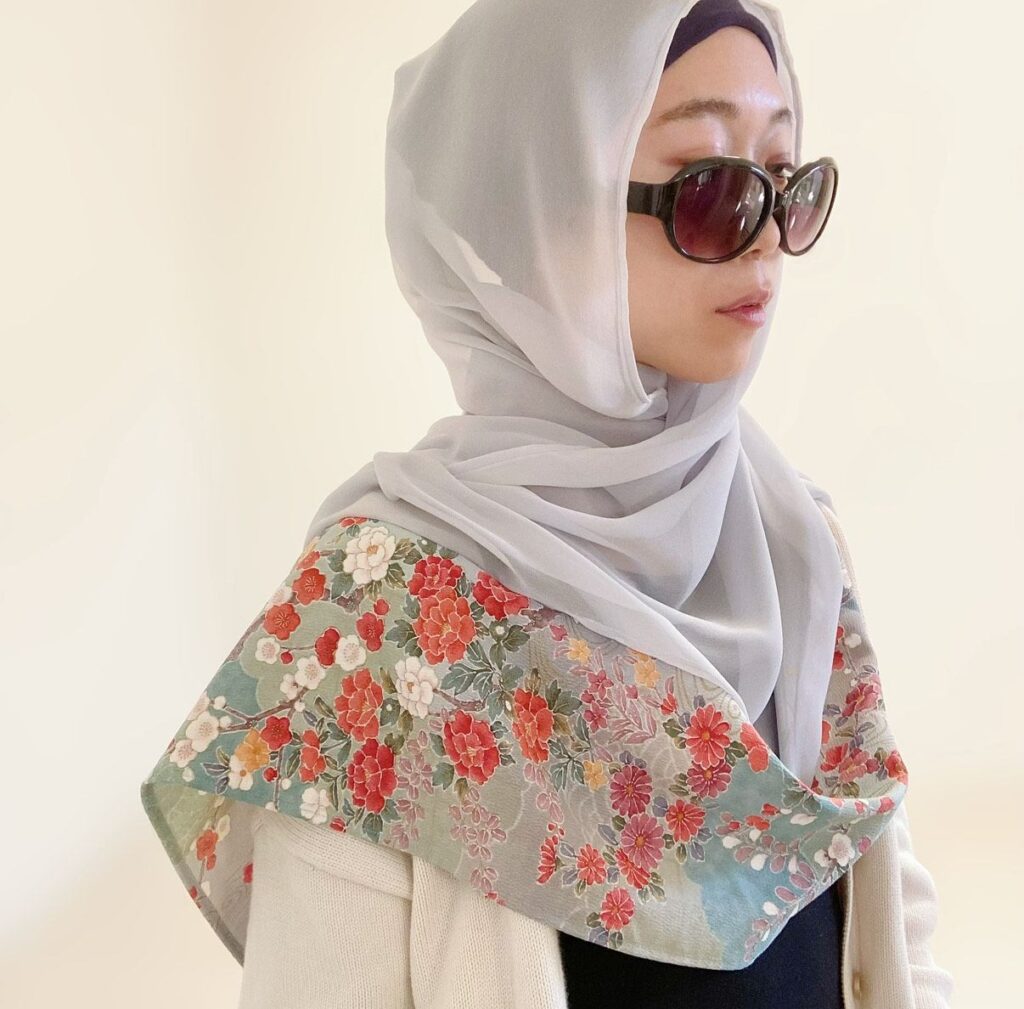Hazem Balousha
NABLUS: In the center of the old city of Nablus is Khan Al-Tujjar, a market built about 450 years ago, and still as vibrant today as it was back then.
Known to locals also as the “Sultan’s market,” a sign at the entrance says that it was constructed by the Ottoman Grand Vizier Qara Mustafa Pasha in 1569, in a similar fashion to the Hamidiyeh market in the Syrian capital, Damascus.
The walls of the roofed building are in the Islamic style — a series of arches raised up with stones and clay — and still bear Ottoman inscriptions. In the center of each arch is a square hatch that illuminates the road below for pedestrians through the sun’s rays, and on both sides of the roof there are many other side windows.
The road through the market, no more than three meters wide, is packed every Sunday with shoppers. Khan Al-Tujjar has managed to endure the ravages of time, and survive despite chaotic events; during the Israeli invasion in 2002, the eastern entrance to the market was destroyed.
Economically, the market represents Nablus’ main commercial center, with dozens of shops and vendors; it is considered one of the most famous markets in the West Bank.
Khan Al-Tujjar is full of clothes and shoe stores, and is especially busy during the holy month of Ramadan. Local merchants sell the best products and goods in the city here, ranging from fruit and vegetables to spices, interspersed with sweet shops, fishmongers selling fresh produce, and various trinket and gift shops.
Several smaller markets branch out from the main body of Khan Al-Tujjar, including Al-Haddadin Market, Najjareen Market, Basal Market, and Al-Nasr Street Market.
Amer Hasiba, one of Khan Al-Tujjar’s resident merchants, inherited his shop, his ancestors having first bought it hundreds of years ago. Like many others on site, the shop does not exceed 20 square meters in size.
“Khan Al-Tujjar is a major landmark in the city of Nablus, and an important commercial center,” Hasiba said. “All a shopper needs can be found in the markets of Nablus at low prices. (During) Ramadan, the commercial movement in Khan Al-Tujjar increases dramatically, and the profits for the merchants increase.”
Nablus is one of the oldest cities in the world, and its construction dates back 5,600 years (to around 3600 BC). It is home to ancient Christian and Islamic landmarks, as well as Turkish baths, springs and squares, with a clock tower in the center built in the Ottoman era.
Samira Nabasha, 44, was walking the market streets carrying bags full of things she had bought for Ramadan. “Every year at this time I came to the old market in order to buy Ramadan supplies. There is quality in the products and prices better than other, modern markets. Here I feel I belong to the city,” she said.
“Since childhood, we have become accustomed to shopping in Khan Al-Tujjar.”






















